Einleitung
Diese Anleitung zeigt dir, wie du die rückseitige Kameraeinfassung und das Linsenschutzglas im Samsung Galaxy S8 Plus austauschen kannst.
Wenn dein Ersatzteil nicht mit Klebestreifen versehen ist, musst du welche für die Kameraeinfassung kaufen. Du kannst vorgestanzte Streifen oder starkes Klebeband verwenden.
Werkzeuge
Ersatzteile
-
-
In den folgenden Schritten wirst du durch den Kleber um die Kante des Rückscheibe schneiden.
-
Im ersten Bild siehst du, wo genau der Klebstoff auf der Rückseite aufgebracht ist.
-
Der Klebstoff ist, von der Aussenseite des Handys aus gesehen, folgendermassen aufgebracht:
-
Dicke Schichten von Klebstoff
-
Dünnere Schichten von Klebstoff
-
Hier nicht hebeln, um den Fingerabdrucksensor zu schützen.
-
-
-
Wenn sich Rückseite warm anfühlt, setze einen Saugnapf so nahe wie möglich an der erwärmten Kante auf, ohne der abgerundeten Kante zu nahe zu kommen.
-
Ziehe am Sauger und schiebe ein Plektrum unter die rückwärtige Scheibe.
-
-
-
Wenn das Werkzeug gut unter der Scheibe eingeschoben ist, erhitze den iOpener wieder und lege ihn auf um den Klebstoff aufzuweichen.
-
-
-
Wiederhole das ganze Verfahren (Erhitzten und Lösen für die restlichen drei Seiten des Smartphones.
-
Lasse jeweils ein Plektrum auf jeder Seite während du mit der nächsten weitermachst, um zu verhindern, dass der Klebstoff wieder alles zusammenklebt.
-
-
-
Mit dem Plastiköffner kannst du durch eventuelle noch vorhandene Klebstoffreste fahren und das Handy leicht öffnen.
-
Entferne die Scheibe vom Handy.
-
-
-
Ziehe alle Klebstoffreste mit einer Pinzette vom Rahmen des Smartphones ab. Reinige dann alle Klebeflächen mit hochkenzentriertem Isopropylalkohol (mindestens 90%ig) und einem fusselfreien Tuch, so dass sie gut für den neuen Kleber vorbereitet sind.
-
Ziehe die Schutzfolie von der neuen Rückscheibe ab, richte eine Kante der Scheibe sorgfältig am Rahmen aus und drücke die Scheibe am Smartphone fest.
-
-
-
Erwärme einen iOpener und lege ihn mindestens zwei Minuten lang auf die Kameraeinfassung oben auf der Glasrückseite.
-
Möglicherweise musst du den iOpener mehrmals erwärmen und auflegen, damit das Smartphone heiß genug wird. Folge der Anleitung für den iOpener, um eine Überhitzung zu vermeiden.
-
-
-
Setze ein Plektrum unter die Oberkante der rückwärtigen Kameraeinfassung ein.
-
Schiebe das Plektrum um die Kanten der rückwärtigen Kameraeinfassung herum und trenne den Kleber auf, mit dem es an der Glasrückseite befestigt ist.
-
Heble nicht an der Seite, die sich am Fingerabdrucksensor befindet.
-
-
-
Hebe die Kameraeinfassung mit einem Plektrum oder einer Pinzette von der Glasrückseite weg.
-
Achte darauf, dass sich die Kameraeinfassung beim Entfernen nicht am Kabel des Fingerabdrucksensors verfängt.
-
Wenn du noch Widerstand verspürst, dann schneide eventuelle Kleberreste mit einem Plektrum auf.
-
-
-
Schabe mit dem Spudger alle Klebstoffreste, die noch von der Kameraeinfassung verblieben sind, von der Glasrückseite ab.
-
Reinige die Klebeflächen mit hochkonzentriertem Isopropylalkohol (mindestens 90%ig) und einem fusselfreien Tuch. Wische in eine Richtung, nicht hin und her. So bereitest du die Klebeflächen für den neuen Kleber vor.
-
-
-
Ziehe die durchsichtige Schutzfolie vom Klebestreifen der Kameraeinfassung ab, so dass die Klebefläche auf einer Seite freigelegt wird.
-
Richte sehr sorgfältig die Ausschnitte für die Rückkamera und den Blitz auf der Innenseite der Glasrückseite mit den entsprechenden Ausschnitten im Klebestreifen aus.
-
Setze den Klebestreifen auf die Glasrückseite ab, er darf auf keinen Fall über die Kanten der Ausschnitte für die Kamera und den Blitz herausragen.
-
Drücke den Klebestreifen mit dem Finger oder dem Spudger fest, so dass er gut am Glas haftet.
-
-
-
Ziehe die grüne Schutzfolie vom Klebestreifen ab. Der Klebestreifen darf sich dabei nicht vom Glas ablösen.
-
-
-
Richte sorgfältig die rückwärtige Kameraeinfassung im Ausschnitt in der Glasrückseite aus und setze sie auf der Klebefläche. Achte darauf, dass die Seite mit der überstehenden Linsenabdeckung zur Glasrückseite zeigt.
-
Achte darauf, dass die Linsenabdeckung ganz in ihrem Ausschnitt in der Glasrückseite sitzt, so dass die Kameraeinfassung flach auf dem Glas aufliegt.
-
Drücke mit dem Finger die Kameraeinfassung 30 Sekunden lang gleichmäßig fest, so dass der Kleber gut haftet.
-
Bevor du die Glasrückseite wieder einbaust und das Smartphone zuklebst, musst du die schwarze Schutzfolie von der gläsernen Linsenabdeckung abziehen.
-
Um dein Gerät wieder zusammenbauen folge den Schritten in umgekehrter Reihenfolge.
Bringe deinen Elektroabfall zu einem zugelassenen Entsorger.
Hat deine Reparatur nicht den gewünschten Erfolg gebracht? Auf unserem Antwortenforum kannst du Hilfe bei der Fehlersuche finden.
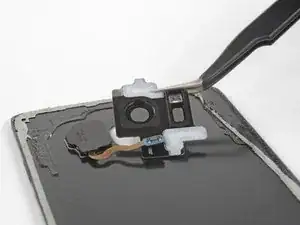
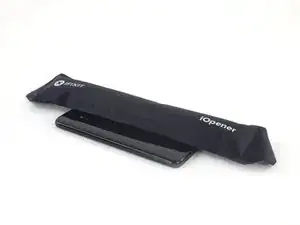
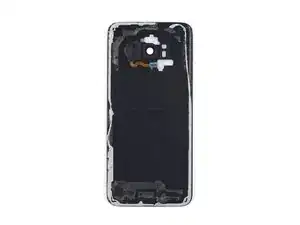
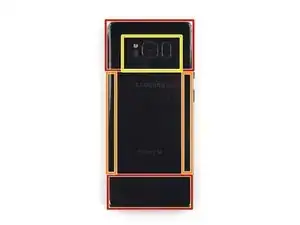
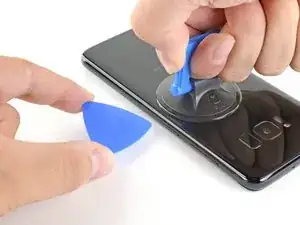

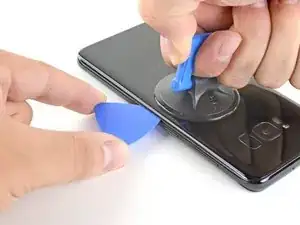
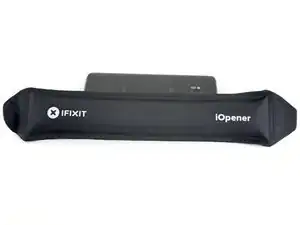
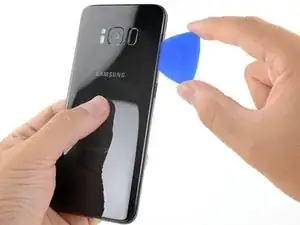
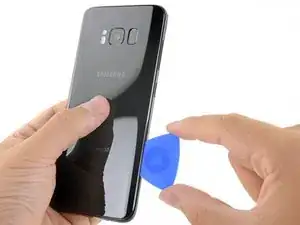

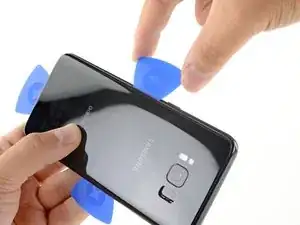
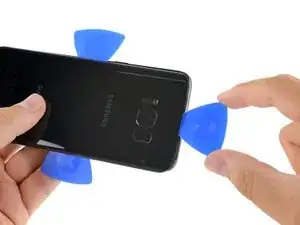
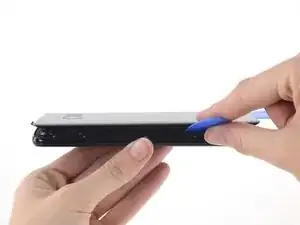
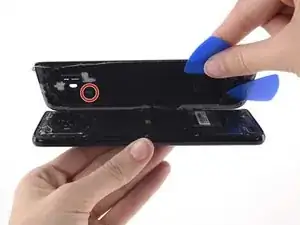
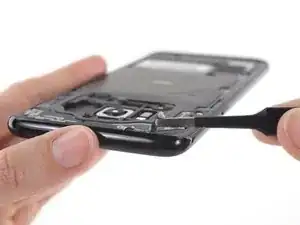
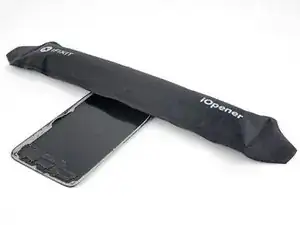
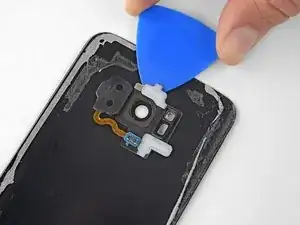
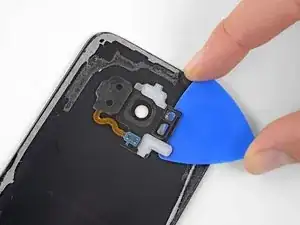
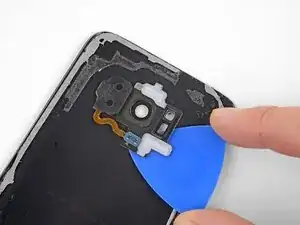
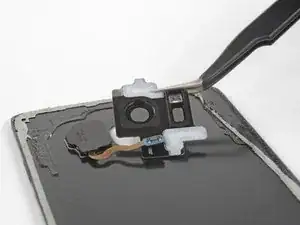
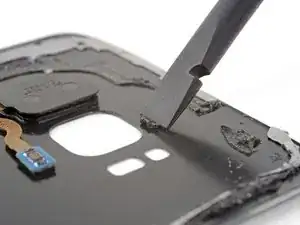
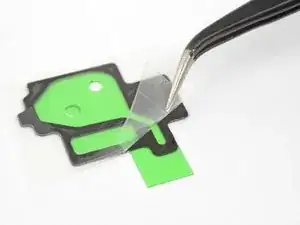
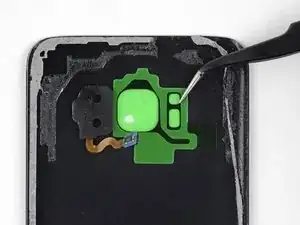
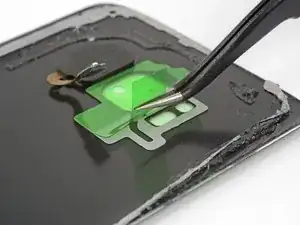
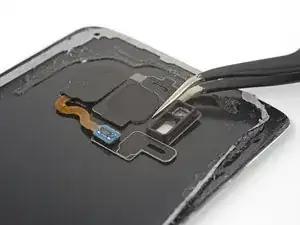
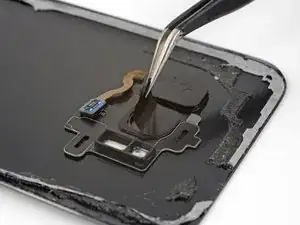

What type of adhesive should be used to seal? Or better said, what would you recommend.
Ion Ion -
I’d recommend precut adhesive designed for the rear cover. If that’s not available, thin, hi-bond double sided tape like 1 mm wide Tesa 61395 tape will work well.
Adam O'Camb -
Yes, different microwaves have different power levels (e.g., wattage) so one microwave may explode the iOpener after 31 seconds of heating whereas another microwave will barely warm it. It would be helpful to have a more precise target temperature. My microwave is fairly weak so I’m heating it for seven seconds for every two minutes against the phone. In theory, this should slowly add more heat than is dissipated into the phone and surrounding atmosphere.
Brett Stime -